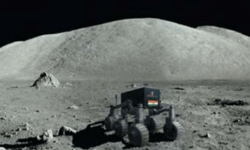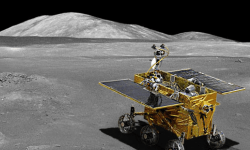
ISRO unveils its space program for the 2020s
– News of May 21, 2019 –
ISRO, the Indian space agency, has achieved feats despite a very limited budget. It succeeded in a lunar mission and a Martian mission. A second mission to the Moon will leave in July 2019. More ambitious than the first lunar mission, it will use an orbiter, a lander and a small rover. This mission is called Chandrayaan-2. But this is only a step in the very ambitious plans of ISRO.
At a conference held in mid-May 2019, officials from the Indian Space Agency spoke about their goals for the 2020s. Space observatories, planetary exploration and manned spaceflights are in the program.
ISRO prepares seven major scientific missions for the next decade
From 2020, the Indian Space Agency will put into orbit an X-ray observatory, called XPOSAT. For five years, the satellite will monitor about 50 potential sources to determine their polarization.
In the same year, ISRO will launch the Aditya-L1 solar observatory, which will orbit Earth at the L1 Lagrange point of the Earth-Sun system. Equipped with seven scientific instruments, it will support Parker Solar Probe and Solar Orbiter to better understand the acceleration of solar winds and the high temperatures of the solar corona.
Then, ISRO wants to send send a new space probe in orbit of Mars, probably in 2022 or 2023. Mangalyaan 2 could be developed in collaboration with France. Like the European TGO mission, Mangalyaan 2 will use aero-braking to circularize its orbit, but will not land on the planet Mars.
One to two years later, ISRO will launch Shukrayaan 1, its first exploration mission of Venus. Here again, a collaboration with France is studied. The space probe will focus on what is happening on the surface and in the atmosphere of Venus.
For its next lunar mission called Chandrayaan-3, ISRO will collaborate with JAXA. This mission will probably go to the Moon in 2024. It will be particularly interested in the water located at the poles of the Moon.
The last space probe that ISRO prepares is certainly the most mysterious. Exoworlds should take off in 2028. There is very little information on this mission but we think that it is surely an observatory dedicated to exoplanets.
India’s first manned spaceflight will be in 2021 or 2022
In parallel with this busy robotics program, ISRO will make its first manned space flights rather quickly. For the past ten years, ISRO has been developing the Gaganyaan spacecraft. Fully automated, Gaganyaan should be able to embark three people for a week in orbit. An atmospheric reentry test was successfully completed in 2014. In July 2018, the spaceship rescue tower was successfully tested.
The first orbital flight of this spaceship could take place at the end of 2020. This unmanned test should be followed by a crewed flight a year later. India would then become the fourth nation to be able to send men into orbit by its own means. If successful, this would pave the way for orbital stations and perhaps India will also enter the race for the return of Man to the Moon.
Before that, ISRO must succeed the Chandrayaan-2 mission in orbit and on the surface of the Moon. This will be the first attempt to land a rover in the lunar south pole region, which is highly coveted by Chinese and Americans. It may be an opportunity to approach a crater and its precious water ice.
Image by ISRO










